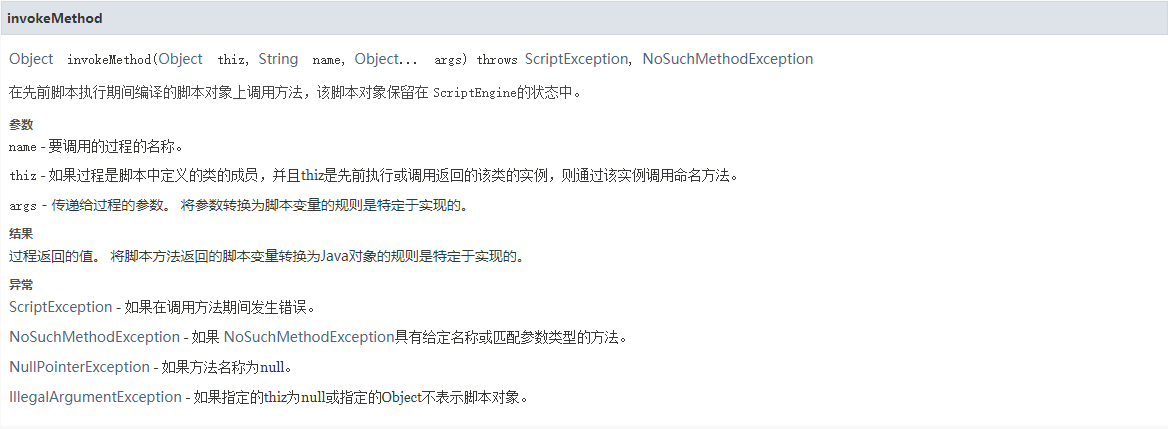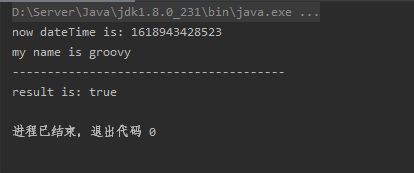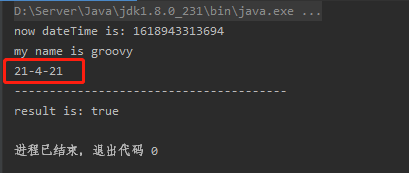关于Java执行groovy脚本的两种方法详细解析
2021-08-09 16:33:32
浏览数 (5621)
groovy是基于Java虚拟机的一门敏捷开发语言,能够很好地和Java语言相结合,也可以用来扩展现有的代码。下面,将为大家介绍关于Java执行groovy脚本的两种方法。
记录Java执行groovy脚本的两种方式,简单粗暴:
一种是通过脚本引擎ScriptEngine提供的eval(String)方法执行脚本内容;一种是执行groovy脚本;
二者都通过Invocable来传递参数并获取执行结果;
Invocable:脚本引擎的解释器接口,提供invokeFunction和invokeMethod两种传递参数并获取执行结果的方法,Java JDK API文档解释如下:

invokeFunction:

invokeMethod:

以下为案例:
引入依赖
<dependency>
<groupId>org.codehaus.groovy</groupId>
<artifactId>groovy-all</artifactId>
<version>1.2.74</version>
</dependency>定义脚本内容并执行
public void testByFunction(){
// 初始化Bindings
Bindings bindings = engine.createBindings();
// 绑定参数
bindings.put("date", new Date());
final String name = "groovy";
// 定义groovy脚本中执行方法的名称
final String scriptName = "execute";
// 定义groovy脚本内容
final String scriptContent = "def " + scriptName +"(name){" +
" println("now dateTime is: ${date.getTime()}");" +
" println("my name is $name");" +
" return date.getTime() > 0;" +
"}";
try {
// 执行脚本
engine.eval(scriptContent, bindings);
// 获取执行结果
Invocable invocable = (Invocable) engine;
Boolean flag = (Boolean) invocable.invokeFunction(scriptName, name);
System.out.println("---------------------------------------");
System.out.println("result is: " + flag);
} catch (ScriptException | NoSuchMethodException e) {
e.printStackTrace();
}
}运行结果:

invokeFunction方法的第一个参数为脚本的函数名称,把scriptName拎出来通过创建String对象再赋值进去,方便你看懂函数名称到底是哪个;scriptContent中${date.getTime()}与$name的意思一样,grovvy中的字符串可以识别${}和$占位符;bindings绑定参数与invokeFunction方法的第二个参数的区别是,前者是脚本内全局的,而后者是定义在函数内的;
例如把脚本内容定义为这样:

执行结果就是这样了:

实例化脚本对象并执行
public void testByMethod(){
try {
// 初始化groovy脚本对象
final TestGroovy testGroovy = new TestGroovy();
// 定义groovy脚本中执行方法的名称
final String scriptName = "execute";
// 定义参数
final Date arg_1 = new Date();
final String arg_2 = "groovy";
// 执行脚本并获取结果
Invocable invocable = (Invocable) engine;
Boolean flag = (Boolean) invocable.invokeMethod(testGroovy, scriptName, arg_1, arg_2);
System.out.println("---------------------------------------");
System.out.println("result is: " + flag);
} catch (ScriptException |NoSuchMethodException e) {
e.printStackTrace();
}
}TestGroovy.groovy脚本内容:
package com.dandelion.groovy
class TestGroovy {
static def execute(Date date, String name){
println("now dateTime is: ${date.getTime()}");
println("my name is $name");
return date.getTime() < 0;
}
}运行结果:

invokeMethod方法的第一个参数是脚本对象,第二个参数是脚本中的函数名称,之后为绑定的参数;
源码:
package com.dandelion.test;
import com.dandelion.groovy.TestGroovy;
import javax.script.*;
import java.util.Date;
public class TestScriptEngine {
// 查找并创建指定脚本引擎
private ScriptEngine engine = new ScriptEngineManager().getEngineByName("groovy");
public void testByFunction(){
// 初始化Bindings
Bindings bindings = engine.createBindings();
// 绑定参数
bindings.put("date", new Date());
// 定义groovy脚本中执行方法的名称
final String scriptName = "execute";
// 定义groovy脚本内容
final String scriptContent = "def " + scriptName +"(){" +
" println("now dateTime is: ${date.getTime()}");" +
" return date.getTime() > 0;" +
"}";
try {
// 执行脚本
engine.eval(scriptContent, bindings);
// 获取执行结果
Invocable invocable = (Invocable) engine;
Boolean flag = (Boolean) invocable.invokeFunction(scriptName);
System.out.println("---------------------------------------");
System.out.println("result is: " + flag);
} catch (ScriptException | NoSuchMethodException e) {
e.printStackTrace();
}
}
public void testByMethod(){
try {
// 初始化groovy脚本对象
final TestGroovy testGroovy = new TestGroovy();
// 定义groovy脚本中执行方法的名称
final String scriptName = "execute";
// 定义参数
final Date arg_1 = new Date();
final String arg_2 = "groovy";
// 执行脚本并获取结果
Invocable invocable = (Invocable) engine;
Boolean flag = (Boolean) invocable.invokeMethod(testGroovy, scriptName, arg_1, arg_2);
System.out.println("---------------------------------------");
System.out.println("result is: " + flag);
} catch (ScriptException |NoSuchMethodException e) {
e.printStackTrace();
}
}
public static void main(String[] args) {
TestScriptEngine engine = new TestScriptEngine();
engine.testByFunction();
}
}以上就是关于Java执行groovy脚本的两种方式和详细代码的全部内容,想要了解更多相关Java groovy脚本内容,请搜索W3Cschool以前的文章或继续浏览下面的相关文章,同时也希望本篇文章能够对大家的学习有所帮助!